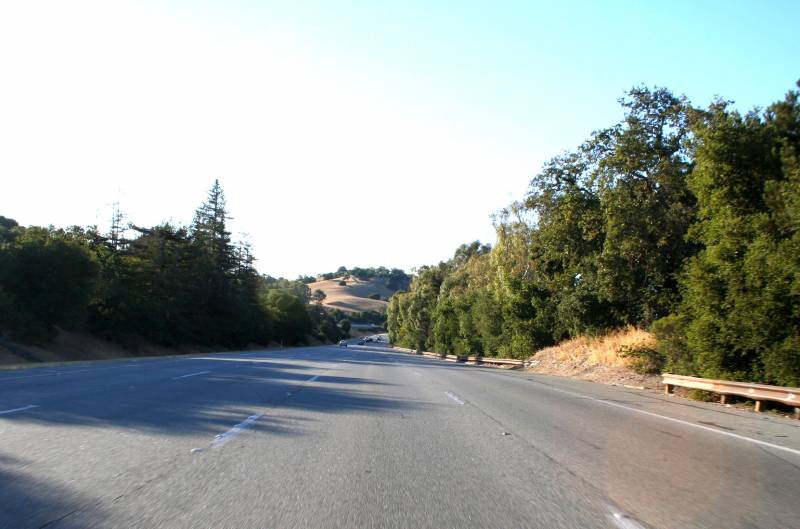Highway 280 is only a few miles west, but it feels a world away. Rolling green hills line the highway, and there’s not a billboard (or a building) in sight.
“It’s all beautiful and green,” Shayer exclaims, his relief almost palpable.
To find out why these two freeways look so different I talked with Lennie Roberts, who’s spent the past 50 years working to protect the Bay Area’s open spaces with an organization called Committee for Green Foothills. She tells me that 280’s beauty is the result of hard-won protections.
“280 was designated as a scenic highway by the state of California, after a lot of work to get it included,” she says. “And billboards are not allowed on state scenic highways.”
The California Legislature passed the Scenic Highway Program into law in 1963. The state and counties work together to prevent development of anything that could make these routes look … well, less scenic.
Roberts is often amused by the reaction of visitors to the Bay Area.
“They’ll fly to San Francisco airport, come up to 280, and they wonder, ‘This is a miracle, why is all this land still so beautiful?’ ” she says.
A Stretch of Bliss … For Now
About 1,300 miles of scenic highway crisscross the state. Each stretch is marked by a colorful sign featuring a bright orange California poppy, with a snow-capped mountain in the background.
But the scenic status of these roads isn’t guaranteed forever.
In 2016, the county of San Mateo put out a memo that hinted at studying locations for a few billboards along 280. That’s when Lennie jumped into action.
“So I started asking questions,” she remembers, “and did not get a very satisfactory answer. Yes, they were going to consider 280.”
Roberts went to the press, which led to a flurry of news stories about the issue. People freaked out. The county says it was a misunderstanding, and that the memo was really referring to Highway 101, but the backlash was loud and clear.
“I actually heard from people who would stop me at the grocery store and say, ‘I saw you on TV. How dare they think about putting billboards on 280!’ ” Roberts says.
Having a scenic highway designation is one of the few clear lines of defense highways have against billboards.
Remember those electronic billboards that Shayer hates so much? Since 2010, the number of those permitted by the state has nearly tripled. And for the first time ever, in 2013, a stretch of I-10 near Palm Springs was officially removed from the scenic highway program to allow for the construction of … a digital billboard.
For Lennie, the lesson from these events is clear. “We always need to stay vigilant and active to keep the protections we have, and hopefully gain more protections over time.”
So I go back to Shayer to share everything I’ve learned, and ask him if he’d be on the lookout for those signs with the poppies on them. Excitedly, he replies, “Now I can’t ignore it! Now every time I see it I’ll know what it means.”

